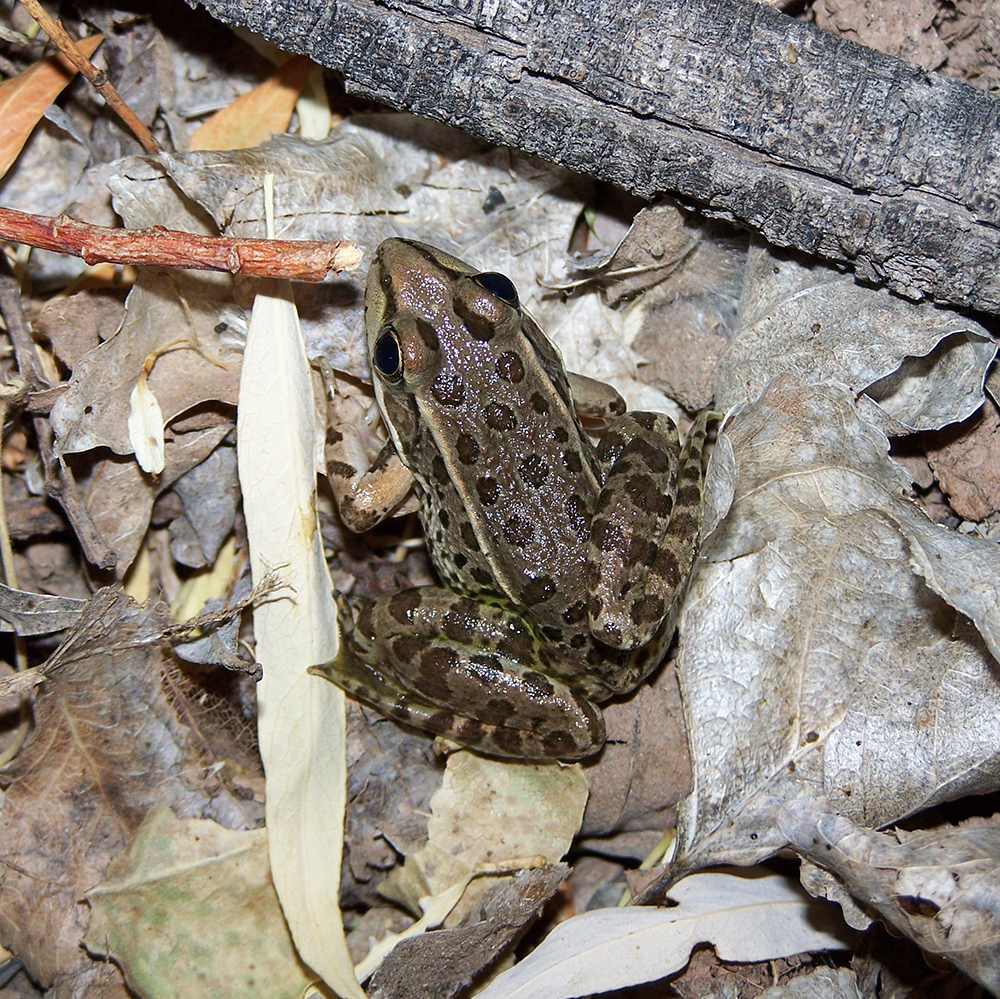Study: Some frogs are adapting to deadly pathogen
By Krishna Ramanujan

Some populations of frogs are rapidly adapting to a fungal pathogen called Batrachochrytrium dendrobatridis (Bd) that has decimated many populations for close to half a century and causes the disease chytridiomycosis, according to a new study.
Cornell and University of Central Florida researchers took a step toward identifying the genetic mechanisms that makes some frogs resistant to Bd infections in their study of lowland leopard frogs in Arizona. The report was published March 23 in the journal Proceedings of Royal Society B: Biological Sciences.
A previous lab study by the same researchers isolated an immune system allele (a variant of a gene) called allele Q that gave frogs immunity to chytridiomycosis, an infectious disease that typically causes skin to deteriorate. In the current study, the researchers attempted to validate those lab results in the field by taking skin swabs and tissue samples from eight natural populations. These samples yielded more than 80 alleles. The researchers observed and recorded whether a frog was infected with chytridiomycosis and then analyzed what immune system alleles each frog inherited.
They verified that frogs in the field with allele Q did indeed survive Bd infections. Additionally, all of the members of one population survived Bd, but upon genetic analysis, these frogs each had alleles that were part of a group of functionally similar alleles (called a supertype) that also gave them immunity. The alleles of this supertype were not found within the populations previously studied in the lab or in any other populations in the field. Allele Q was not part of this supertype.

“We found a very specific and significant relationship between having particular immune system genetic variants and being susceptible to this disease,” said Anna Savage, Ph.D. ’12, the study’s first author and an assistant professor of biology at the University of Central Florida. The study culminates work she began at Cornell as a graduate student in the lab of Kelly Zamudio, the Goldwin Smith Professor of Ecology and Evolutionary Biology in the College of Arts and Sciences, who is a co-author of the study.
“These findings confirm that, at least under some environmental conditions, frogs can evolve tolerance to pathogens – even deadly ones – in their surroundings,” Zamudio said.
The variations in immune system genes that give frogs tolerance to Bd infections are associated with a frog’s ability to identify pathogens and launch an immune response.
Genetic analyses revealed that these immune system alleles and supertypes associated with survival in the field showed signs of positive selection, providing evidence that these alleles were increasingly inherited and rapidly evolving, Savage said. At the same time, alleles that were associated with susceptibility to Bd did not show signs of positive selection.
Along with genetics, environment plays a big role in disease dynamics. For example, the researchers previously used a predictive computer modeling approach incorporating genetic and environmental data and found “a significant relationship” between genetic diversity and whether a frog was infected or whether a frog died, Savage said. But when it came to the intensity of those infections, environmental factors such as temperature and precipitation, rather than genetics, were the driving force. Since populations in Arizona only get chytridiomycosis in winter when temperatures drop and Bd becomes more virulent, “much of the year, there is no selective pressure for these populations to adapt at all,” Savage said. Such inconsistent, less pervasive pressure “is likely going to reduce how quickly populations might adapt,” she added.
The study was funded by the National Science Foundation and the National Geographic Society.
Media Contact
Get Cornell news delivered right to your inbox.
Subscribe